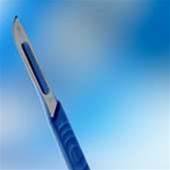
The device is made of a single tube of carbon atoms stretched between two tungsten needles and will be used to cut open individual cells under a microscope.
Nano-tweezers, nano-bearings and nano-oscillators have also been built for very fine manipulation.
The nano-knife was built to combat existing problems with slicing cell samples. Glass knives are commonly used today, but are too thick and can damage the object they are cutting.
The nano-knife itself has been extensively tested and the blade is the strongest part of the device.
Researchers reported that the first part to give way under stress was the weld to the tungsten and that they are trying new techniques to improve the join.

_(22).jpg&h=140&w=231&c=1&s=0)
_(20).jpg&h=140&w=231&c=1&s=0)





_(26).jpg&w=100&c=1&s=0)

 iTnews Executive Retreat - Security Leaders Edition
iTnews Executive Retreat - Security Leaders Edition











_(1).jpg&h=140&w=231&c=1&s=0)



